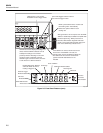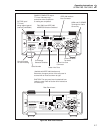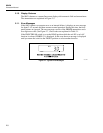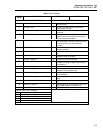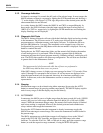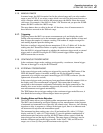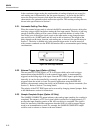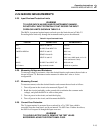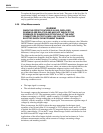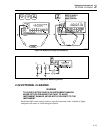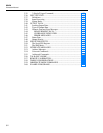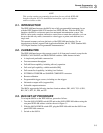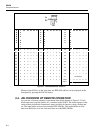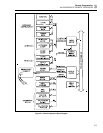
8842A
Instruction Manual
2-14
To replace the front panel fuse, first remove the test leads. Then press in the lip of the 2A
input terminal slightly and rotate it 1/4-turn counterclockwise. Spring tension will force
the fuse and fuse holder out of the front panel. The internal 3A fuse should be replaced
only by qualified service personnel.
2-29. Offset Measurements
WARNING
WHEN THE OFFSET FEATURE IS IN USE, DISPLAYED
READINGS ARE RELATIVE AND MAY NOT INDICATE THE
PRESENCE OF DANGEROUS POTENTIALS AT THE INPUT
CONNECTORS OR TEST LEADS. USE CAUTION TO AVOID
ELECTRIC SHOCK OR INSTRUMENT DAMAGE.
The OFFSET feature allows you to store a reading as a relative reference value. When the
OFFSET button is pressed, the 8842A stores the present reading and displays subsequent
measurements as the difference between the measured value and the stored reading. The
OFFSET annunciator is lit whenever an offset is in use.
The OFFSET feature may be used in all functions. Since the display represents a numeric
difference, it always has a sign, even in the resistance and ac functions.
The offset can be canceled by pressing the OFFSET button again, in which case the
OFFSET annunciator disappears from the display. The offset can also be canceled by
storing an offset in another function. If a reading is overrange or unavailable when the
OFFSET button is pressed, the 8842A indicates ERROR 32 and does not store the offset.
If you change functions while an offset is stored, the OFFSET annunciator disappears and
the offset temporarily disappears. However, when you return to the original function, the
offset is restored (and the OFFSET annunciator reappears) unless a new offset was
established in another function. Note that the input overload limits are not changed by the
use of the offset feature. However, the display flashes if the 8842A is in the 1000V dc or
700V ac ranges and the input exceeds 1000V dc or 700V ac, respectively.
While an offset is enabled, the 8842A indicates an overrange condition if either of the
following conditions occur:
• The input signal is overrange
• The calculated reading is overrange
For example, suppose the instrument is in the 20V range of the VDC function and you
store an offset of +15V. The maximum positive voltage reading that can be displayed
without overranging is +4.9999V, which is actually a +19.9999V input signal. The
maximum negative voltage reading that can be displayed without overranging is -
19.9999V, which is actually a -4.9999V input signal. You can measure a greater range of
voltages by selecting a higher range.
When in autorange, the 8842A selects the range appropriate for the input signal,
regardless of any stored offset. If, for example, a +10V offset is stored, and a +1V input
is applied, the 8842A will autorange to the 2V range and display an overrange condition
since it cannot display -9V on the 2V range. Manual range control could be used to lock
the 8842A into the 20V range in this case.
Applications of the offset feature include correcting for test lead resistance in 2-wire
resistance measurements, nulling offset currents or voltages, measuring voltage
deviations, and matching resistors.



